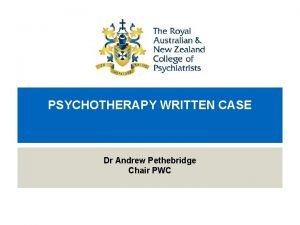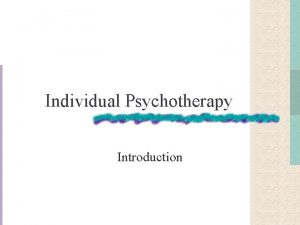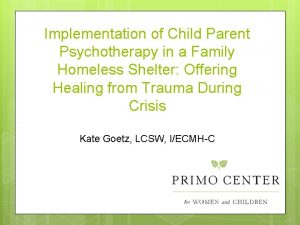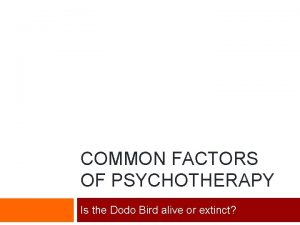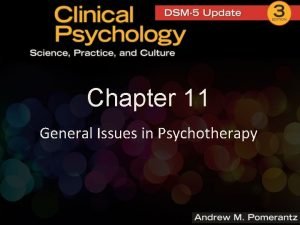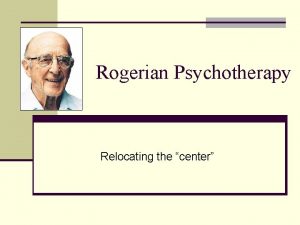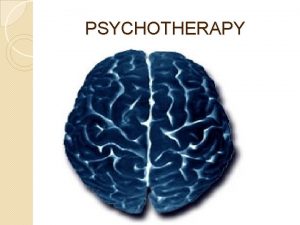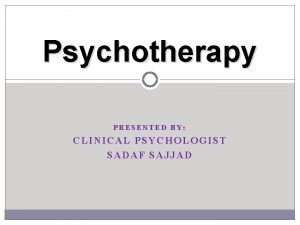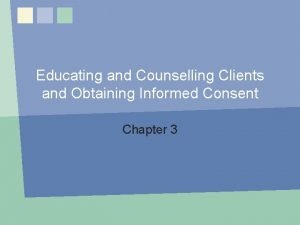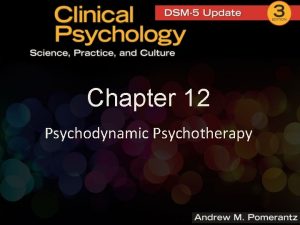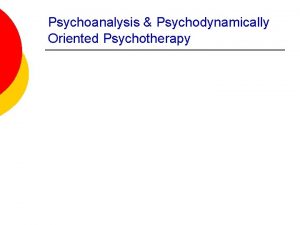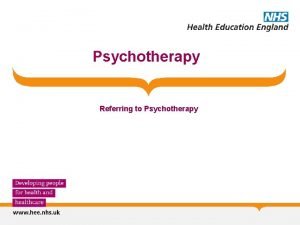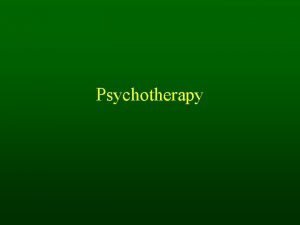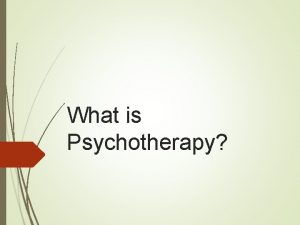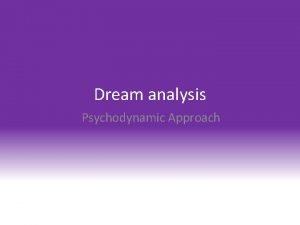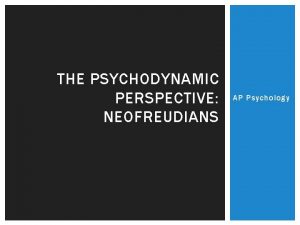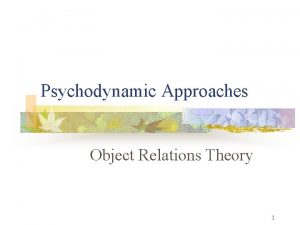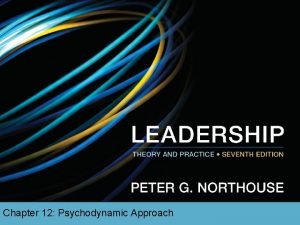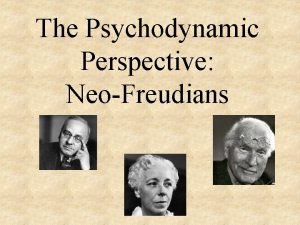THE PRINCIPLES OF PSYCHODYNAMIC PSYCHOTHERAPY Section V of













- Slides: 13

THE PRINCIPLES OF PSYCHODYNAMIC PSYCHOTHERAPY Section V of Division 39 The Section of Applied Clinical Psychoanalysis January, 2017

The Unconscious • The vast majority of what goes on in our minds occurs outside of consciousness – This is an empirically determined fact • Thoughts, feelings and motivations influence our behavior in ways that are outside of our conscious awareness • This is part of what therapist and the patient are to discover together

Making Meaning out of Behavior • All behavior has meaning – It is our job to join the client in figuring out what their behavior means – That meaning will, initially, not likely be conscious to the client (e. g. A patient comes late for appointment)

Psychic Causality • Stuff (behaviors, events) happens for reasons – They are not always as accidental or random as they seem • Things are over-determined – They have multiple causes • Symptoms/behaviors are also not randomly determined – They happen for reasons outside of our awareness – They are adaptations, compromises with ourselves

Internal Conflict • It is not uncommon for people to have mixed and opposing feelings that exist within themselves and may be of an unconscious nature (e. g. , I want to be promoted but keep sabotaging myself because I am unconsciously scared that I can’t do the job; or, a student reports that he forgot to bring a book he had to read, and then realizes that it had caused him to have a nightmare – This is distinct from conflict between people • Internal conflict is the source of many unwanted behaviors

Symptoms • Just as with medical findings, a symptom is a reflection of an underlying problem (e. g. , A cough or a headache could be caused by a number of underlying problems • These symptoms are compromises struck by the patient with themselves as a way of managing undesired feelings and thoughts • The less tolerable side of these conflicts is kept from consciousness by way of defense mechanisms

Defense • Defenses help to manage our unwanted thoughts feelings and behaviors • Defensive processes, in the psychoanalytic sense, are unconscious in nature • Defenses always compromise reality to one degree or another • They can be more subtle or primitive in nature • The more primitive the defense the greater the distortion of reality (e. g. sublimation vs. denial • Defenses also serve an adaptive function so there is a reluctance to give them up

Past Informs Present • Past experiences shape us – How we think about ourselves – How we think about others – Our beliefs about ourselves and the world around us • The past has an ongoing influence – It lives in the present • We are not trying to discover the past, but the ways in which it evidences itself in present symptoms and relationships • It lives within therapeutic relationship

Transference and Countertransference • Transference: – We don’t experience any new relationship in an entirely new manner – Our approach, wishes, and expectations are shaped by prior relationships – Transference refers to the influence of these past relationships on the patients experience of therapist and therapeutic relationship • There is empirical evidence to support the idea that those therapies that include work with transference phenomenon have better outcomes than those that do not

Transference and Countertransference • Countertransference: – Refers to the influence of therapist’s past on his/her reaction to the patient – The term countertransference has had multiple meanings over time – We all have emotional reactions to our patients – These reactions can inform us about ourselves but also provide important information about what may be occurring for our patients – The exploration of both transference and countertransference are useful to therapeutic process

How the Psychodynamic Process is Viewed • Non-Directive • Psychoanalytic therapy is not something done to or practiced on another person. It is something done with another person. • It is based on mutual respect and trust and assumes that this takes time to fully develop • The therapist is trying to understand something and assist with something that cannot be attained without partnership with the patient • There is a humility about this • Requires tolerance of ambiguity and deprivation on the part of both

Listening • At several levels – Manifest Content – Latent Content – Sequence – Affect – Self

How the Psychodynamic Supervision Process is Viewed • A collaboration between supervisor and supervisee • A reflective process • A process that is not directive • One that is based on mutual respect and trust
 Difference between counselling and advice
Difference between counselling and advice Ranzcp psychotherapy written case
Ranzcp psychotherapy written case Eclectic approach ap psychology
Eclectic approach ap psychology Re-educative individual psychotherapy
Re-educative individual psychotherapy Cpp triangle of explanation
Cpp triangle of explanation Cognitive psychology ppt
Cognitive psychology ppt Bracketing skills
Bracketing skills Dodo bird psychology
Dodo bird psychology General issues in psychotherapy
General issues in psychotherapy Who is carl rogers
Who is carl rogers Psychotherapy refers to
Psychotherapy refers to Sajjad urban dictionary
Sajjad urban dictionary Definitions of counselling
Definitions of counselling Quantum psychotherapy
Quantum psychotherapy

